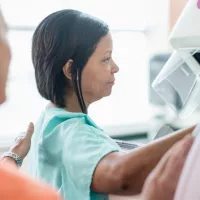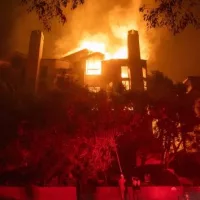
(NEW YORK) — Breast cancer deaths have fallen by 44% compared to 35 years ago, saving nearly 520,000 lives, according to a new report by the American Cancer Society.
The dramatic decrease is a major milestone in the fight against breast cancer, according to Dr. Lisa Newman, a co-author of the report, released on Tuesday, the start of Breast Cancer Awareness Month.
“This decline is evidence of our success in better treatments for breast cancer, especially with targeted treatments,” Newman, chief of the section of breast surgery at NewYork-Presbyterian/Weill Cornell Medical Center, told ABC News.
Beyond advances in care, Newman noted that mammography has also played a crucial role in detecting cancer earlier.
In April, the U.S. Preventive Services Task Force updated their guidelines, recommending that women at average risk for breast cancer get a mammogram every two years starting at age 40.
However, screening isn’t perfect, Newman stressed.
Women should watch for new lumps, skin changes, and nipple changes, including unusual discharge, pain, and redness.
Even if the last mammogram is clear, women should discuss any changes with a healthcare provider.
Steepest rise in new cases among women under 50
Though breast cancer deaths have dropped, new cases continue to rise.
From 2012 to 2021, breast cancer diagnoses increased by 1% each year, with the steepest rise among women under 50.
The reasons for the increase in diagnoses at a younger age remain unclear, Newman said.
“We speculate that it is related to differences in lifestyle and environment given the obesity epidemic and more women delaying their childbearing years and having fewer pregnancies over their lifetime,” she said.
Racial disparities in breast cancer persist
Yet despite lower overall death rates, racial disparities in breast cancer persist.
American Indian and Alaska Native (AIAN) women have seen no improvement in death rates, while Asian American/Pacific Islander (AAPI) women face the fastest uptick in new cases, with a nearly 3% annual increase.
And despite having 10% fewer cases than white women, AIAN women are 6% more likely to die from the disease and receive fewer regular mammograms.
Black women face a 38% higher chance of dying from breast cancer and have worse outcomes at every stage and subtype, except for localized cancers, compared to white women.
“Studies show that Black women are more likely to receive mammograms at lower-quality facilities, face delays in diagnosing abnormalities, and experience delays in starting and completing treatment,” Newman explained.
Because African American women are more prone to triple negative breast cancer, a particularly deadly form of the disease, Newman said there is a strong push to improve the diversity in clinical trials.
In May of 2024, the ACS launched the VOICES of Black Women Study which will enroll 100,000 Black women aged 25 to 55 and follow them for 30 years.
Newman also pointed out that breast cancer can affect men, especially African American men, who have double the risk compared to White men.
While the report revealed many promising trends in breast cancer, the disease remains the second most common cancer among women in the U.S. after skin cancer and the leading cause of cancer deaths for Black and Hispanic women. In 2024, experts predict over 300,000 new invasive (stage I and above) breast cancer cases with more than 40,000 deaths.
The report’s findings are based on data from the national cancer tracking programs that includes information from the National Cancer Institute and the Centers for Disease Control and Prevention.
Copyright © 2024, ABC Audio. All rights reserved.















